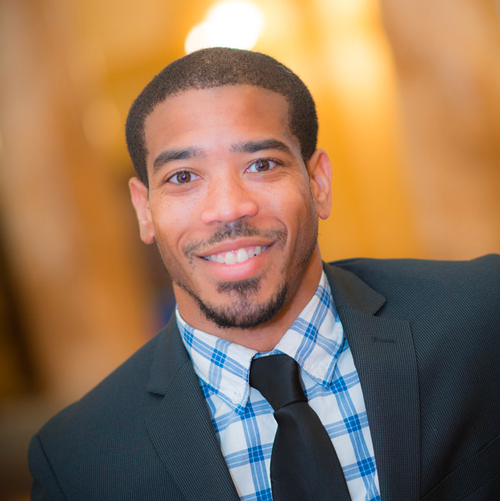
By Brice Yates, Ph.D.
Chief Diversity, Equity, and Inclusion Officer for the College of Chemistry
University of California, Berkeley
The challenges of increasing minoritized individuals enrolling in STEM have been well documented and discussed for many decades. STEM departments within colleges and universities have become more intentional in their recruitment efforts of enrolling minoritized individuals into their programs, both at the undergraduate and graduate levels. As departments and institutions are seeking to increase diversity through minoritized student enrollment, departmental administration needs to take an in-depth look at the current climate existent within their departments. It is imperative for departments to have an understanding of their current climate as recruitment and retention efforts will be reflected in the environment. Within STEM, minoritized students may encounter a department that is largely homogenous from faculty to support staff, as well as their student peers. Feelings or actions of exclusion often arise in homogenous departments and can have a negative effect on minoritized students. The feeling of exclusion can occur via classroom setting and research groups. Research groups are comprised of graduate students (and to a lesser extent undergraduate students) who are a part of a principal investigator (research faculty) groups. An exclusionary environment can have a negative effect on minoritized students, both academically and mentally. Academically, minoritized students may feel challenged by the rigors of STEM course work while simultaneously not receiving adequate support from their faculty. Lack of support can arise through faculty not making themselves available to students during office hours to address course content or lab experimental questions. The notion of learning by trial and error can be challenging and potentially detrimental as students come from various learning backgrounds, and can also emerge within the classroom setting by not using inclusive examples related to STEM studies. In a predominately homogenous department, being one of few or potentially the only individual who identifies as a minoritized student can be taxing, which can lead to mental exhaustion and frustration. The feeling of having to prove or validate oneself, where your peers nor faculty reflect your identity, is a feeling many students of color experience within STEM.
Data collection is key to improving STEM departments. Quantitative data collection, such as climate surveys, provide the opportunity for STEM departments to capture the perspectives of students, faculty, and staff, regarding diversity, equity, and inclusion (DEI). Within the College of Chemistry at the University of Berkley, climate surveys have been developed for faculty/staff, graduate students, and undergraduate students. These surveys are designed to assess the College’s climate for DEI from College constituents. Trainings are also provided for faculty, staff, and students focused on addressing and removing racial bias, gender bias, and addressing and eliminating sexual harassment. Upon conclusion of each training, a five-question survey instrument is utilized to gather feedback from participants. Participant feedback assists in ascertaining learning and content value. Via participant feedback, the College is able to provide trainings and address relevant DEI topics for constituents. As individuals are on different levels of the diversity continuum, training and content is designed to engage individuals as various levels of DEI competency.
Climate surveys and focus group discussion are two methods of ascertaining the perspective of minoritized students in STEM departments. Although climate surveys are often anonymous, departments can provide the opportunity for participants to self-identify as well as provide the opportunity via open ended questions to detail their experiences within the STEM field. Focus groups provide STEM departments the opportunity to dive deeper by engaging in rich discussion with students who participate in focus groups. In a small group setting amongst peers who share the same salient identity, minoritized students may feel more comfortable expressing their experiences and realizing shared commonalities among other focus group participants. STEM departments should use the qualitative information gathered via focus groups and intentionally work to address the areas of concerns that may arise.
Listening to the voices of students is important as departments strive to improve DEI efforts. Through meaningful conversation with minoritized students, the administration within the College of Chemistry at the University of California, Berkeley is working to establish a multicultural space within the College. The notion of creating such space was brought forward during these conversations. Students expressed the need for such space because it would be welcoming and affirming for struggling students. Minoritized students comprise 14.6% of the College’s total student body population. Such spaces would serve as a lounge space, study space, and/or a safe space for students. As we continue to have conversations about inclusion, it was important for us to establish a physical-multicultural space within the College of Chemistry complex for students.
Within the College of Chemistry at the University of California, Berkeley we work to create an equitable and inclusive College environment. The College has conducted a comprehensive College policy review process evaluating, revising, and communicating changes in policies and protocols to ensure diversity, equity, and inclusion are considered and incorporated. This process is committed to addressing discriminatory phobias (i.e., homophobia, xenophobia, transphobia, etc.) and removing systemic isms (i.e., racism, sexism, ableism, etc.). Diversity, equity, and inclusion (DEI) can no longer be an afterthought within STEM, nor can we continue to tolerate the notion that DEI is not applicable to hard sciences. As the student body within colleges and universities becomes more diverse, the mindset of teaching and engaging with students needs to shift. I have long made the argument that higher education institutions prepare students to be academically successful while simultaneously developing students to be global change agents upon completion of their academic studies and graduation.
Through the development of the College of Chemistry’s first ever Diversity, Equity, Inclusion, and Belonging (DEIB) Strategic Plan, the College has placed a strong focus on sustaining diversity by ensuring an equitable and inclusive climate is established; a climate that is welcoming to all students, faculty, and staff regardless of protected class status. The development of the strategic plan demonstrates the College’s commitment of improving and enhancing DEI. The plan represents a roadmap to advance DEIB by leveraging existing successful initiatives and embracing new innovative ideas. The current plan is comprised of four leading goals that we aspire to as a College.
- Goal 1: Enhance diversity in the College at all levels through increased recruitment of students, faculty, and staff that are broadly representative of the diverse population of California.
- Goal 2: Sustain diversity in the College by ensuring an inclusive climate, welcoming to all students, faculty, and staff regardless of race, ethnicity, gender, gender identity, sexual orientation, or disability status.
- Goal 3: Build on the inclusive climate in the College to maximize the retention, graduation, and diverse career opportunities of undergraduate majors and graduate students, eliminating disparity in access and opportunities among diverse groups.
- Goal 4: Implement best practices for mentoring and career development for faculty and staff that promote equitable opportunities for academic and career success.
For each goal, strategies and action items have also been developed. To achieve our goals, an internal metrics document that aligns with the strategic plan was also developed. The internal metrics document lists responsible individual/office and check-in dates for each outcome. The metrics document also provides the College with quantifiable measures used to track and assess the status of accomplishing strategic plan goals.
In order for change to be implemented, buy-in from leadership is key. As the College strives to create an inclusive and welcoming environment, I have worked collaboratively with the College Dean and Department Chairs to enhance diversity in the College at all levels through increased recruitment/retention of minoritized students, faculty, and staff. It has been imperative to receive the support of leadership as their assistance is paramount in supporting and championing the needed changes for creating an inclusive and welcoming environment.
Shifting and changing the mindset within STEM begins with the intention of striving to create an environment that is truly welcoming, inclusive, and supportive of all students. To achieve these lofty but feasible goals, STEM departments need to first, reflect on the current environment, second, address the needed changes, and third, be intentional and authentic in recruitment and retention of minoritized students. For some departments and institutions, these steps may occur quicker than others. It is important to understand that the process is not a sprint, it is a marathon that creates the much-needed inclusion in STEM.
 Dr. Brice Yates is a 11-year higher education administrator, currently serving as the inaugural Chief Diversity, Equity, and Inclusion Officer for the College of Chemistry at the University of California, Berkeley. Dr. Yates’ research focuses on the impact of diversity, equity, and inclusion (DEI) initiatives on college and university campuses.
Dr. Brice Yates is a 11-year higher education administrator, currently serving as the inaugural Chief Diversity, Equity, and Inclusion Officer for the College of Chemistry at the University of California, Berkeley. Dr. Yates’ research focuses on the impact of diversity, equity, and inclusion (DEI) initiatives on college and university campuses.

